Is my house making me sick? It very well could be! Indoor air pollution is a huge problem! Find out the problems with chemical cleaning products, dangerous toxins to avoid and the products they are in, what the government does about it, and what indoor air pollution to worry about beyond chemical cleaners.
In the last several years, a growing body of scientific evidence has indicated that the air within homes and other buildings can be more seriously polluted than the outdoor air in even the largest and most industrialized cities (EPA). Indoor air is often 5x more polluted than the air outside.
A 20-year longitudinal study conducted by scientists at the University of Bergen in Norway has found that using cleaning products can be as harmful as smoking 20 cigarettes a day (Detrick, 2018). More on the details of the study here.
Just a Reminder: Blog does contain Affiliate links. If you buy something, I’ll possibly make a small commission from it, but at no additional cost to you.
Health Issues Associated with Indoor Air Pollution

Indoor air is often more polluted than outdoor air.
The fact that we are unknowingly exposing ourselves to dangerous toxins in the air we breathe in our own homes is rather sad. Indoor air pollution is linked to respiratory problems, asthma, lung cancer, heart disease, nervous system disorders, hormone imbalances, birth defects, reproductive problems, allergies, and more.
I had a childhood dog that died of lung cancer and there were no smokers in my home. I think about how my childhood house was often sprayed with chemical air fresheners and it makes me sick.
Toxins in Air Fresheners
A few years ago, I checked out the ratings for the Lysol on EWG and it was a 10 an F grade. That is just about the worse thing you can do in your home. EWG’s Guide to Healthy Cleaning found significant skin damage, development and respiratory hazards associated with exposures to some of the ingredients in Lysol’s products (Swanke, 2013).
Problems with Chemical Cleaning Products
NOTE: This isn’t even a debated topic or one that is being covered up, you don’t even have to dig for the information. If you Google just about anything on the topic of dangers with chemical cleaners, you will see many related articles saying the same things.
Using chemical cleaners means distributing toxins to your counters that people eat off of, the floors your pets walk on and then lick their feet, the dishes you eat off of, and the air you breathe into your lungs. Even if you wash your surfaces with water after using chemical cleaners, residues from chemical cleaners are still left behind and build up on surfaces over time. Even your regular dish soap and hand soap is not doing your health any favors!
Throw out the Bleach – Don’t Wait Until It is Empty!
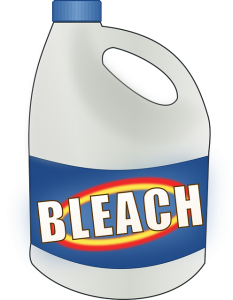
Chlorine bleach is one of the most dangerous chemical cleaners there is.
The second worse if not the worse thing after using chemical air fresheners is using bleach with chlorine! It is damaging to the lungs and the nervous system just from breathing it in. It can also cause skin rashes, migraines, muscle pains, nausea, vomiting, and more. There is a good chance of a respiratory illness or another infection from even indirect exposure to bleach. Kids and pets lungs are even smaller and their immune systems are not equipped to handle the toxic fumes.
Oh and most people don’t even use bleach correctly! If you view the directions it needs to be diluted with water with the proper ratio. It should also NEVER be mixed with other cleaners, you need to be wearing gloves, and need proper air flow. WHY RISK IT? (Note: chlorine bleach replacements will be covered in my next blog).
Other Chlorine Exposures
Bleach with chlorine has also been known to pollute our environment. It has been used to treat our water system. It gets mixed with other minerals and elements that create even more dangerous toxins which take years to dissolve. According to the U.S. Council of Environmental Quality, “Cancer risk among people drinking chlorinated water is 93% higher than among those whose water does not contain chlorine (Forti, 2016).” On that note, if you haven’t read my blog on drinking clean water and why it is necessary view it here.
17 in 1 Premium Drinking Water Test Kit – 100 Strips + 2 Bacteria Tests Buy here.
Reverse Osmosis Drinking Water Filter System Buy Here.
It is also important to note, you absorb chlorine from your water when you shower or take baths too. If you have a lot of chlorine in your water, you might want to consider a shower head filter. Chlorine bleach is also used in factories which contributes to outdoor air pollution. Additionally, chlorine is used to bleach toilet paper, paper towels, napkins, etc. View more on that here. You can buy these products bleach free though! The Green Forest brand below makes toilet paper, paper towels, kleenex, and more.
Green Forest Premium 100% Recycled Bathroom Tissue, 352 Sheets, 12 Rolls Buy Now.
Seventh Generation Bathroom Tissue, 240 CT, White 24 per Pack Buy Now.
Antibacterial Wipes & Disinfectants
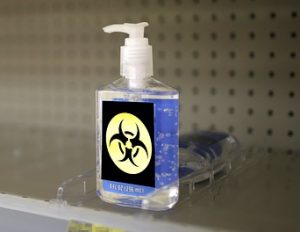 Bleach isn’t the only problem! Antibacterial cleaning wipes have something called quats. Too much exposure to quats can cause microorganisms called superbugs which are resistant to important antibiotics. The same goes for using hand sanitizers. If your hand sanitizer isn’t made with alcohol it is made with triclosan which is antibacterial and can cause superbugs.
Bleach isn’t the only problem! Antibacterial cleaning wipes have something called quats. Too much exposure to quats can cause microorganisms called superbugs which are resistant to important antibiotics. The same goes for using hand sanitizers. If your hand sanitizer isn’t made with alcohol it is made with triclosan which is antibacterial and can cause superbugs.
According to a report, more than 2.8 million antibiotic-resistant infections occur in the U.S. each year, and more than 35,000 people die as a result (CDC,2021). I talk a bit more in-depth about the problems with over using hand sanitizer in this blog: How to Strengthen Your Immune System & Defend it When it’s Weak.
Problems with Fragrances –
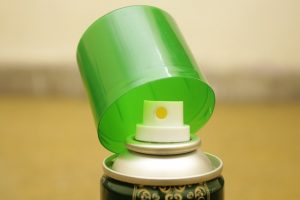
About 95% of chemicals used in synthetic fragrances are derived from petroleum.
It is not just perfume, we are talking about with fragrances. Fragrances are in air fresheners, body care products, and chemical cleaners. A National Academy of Sciences points out some vital facts: About 95 percent of chemicals used in synthetic fragrances are derived from petroleum (crude oil) (Price, 2016). The ingredients are absorbed right into your bloodstream. The toxins in this petroleum are linked to allergies, birth defects, cancer, nervous system disorders, respiratory illnesses, and more.
Fragrances also frequently contain phthalates (which won’t be listed on labels), which are associated with hormone disruption, birth defects and developmental toxicity (J, Meghan).
Here is a study from NCBI on the harm of fragrances: Fragranced consumer products: exposures and effects from emissions. This study shows over 34.7% of the population has reported health problems such as migraine headaches and respiratory difficulties from fragrances. That’s more than 1/3 of the population! Some people can’t even go into rooms with strong fragrances.
Read more on the dangers here: Dangers of Synthetic Scents Include Cancer, Asthma and Kidney Damage.
Indoor Air Pollutants andTheir Sources
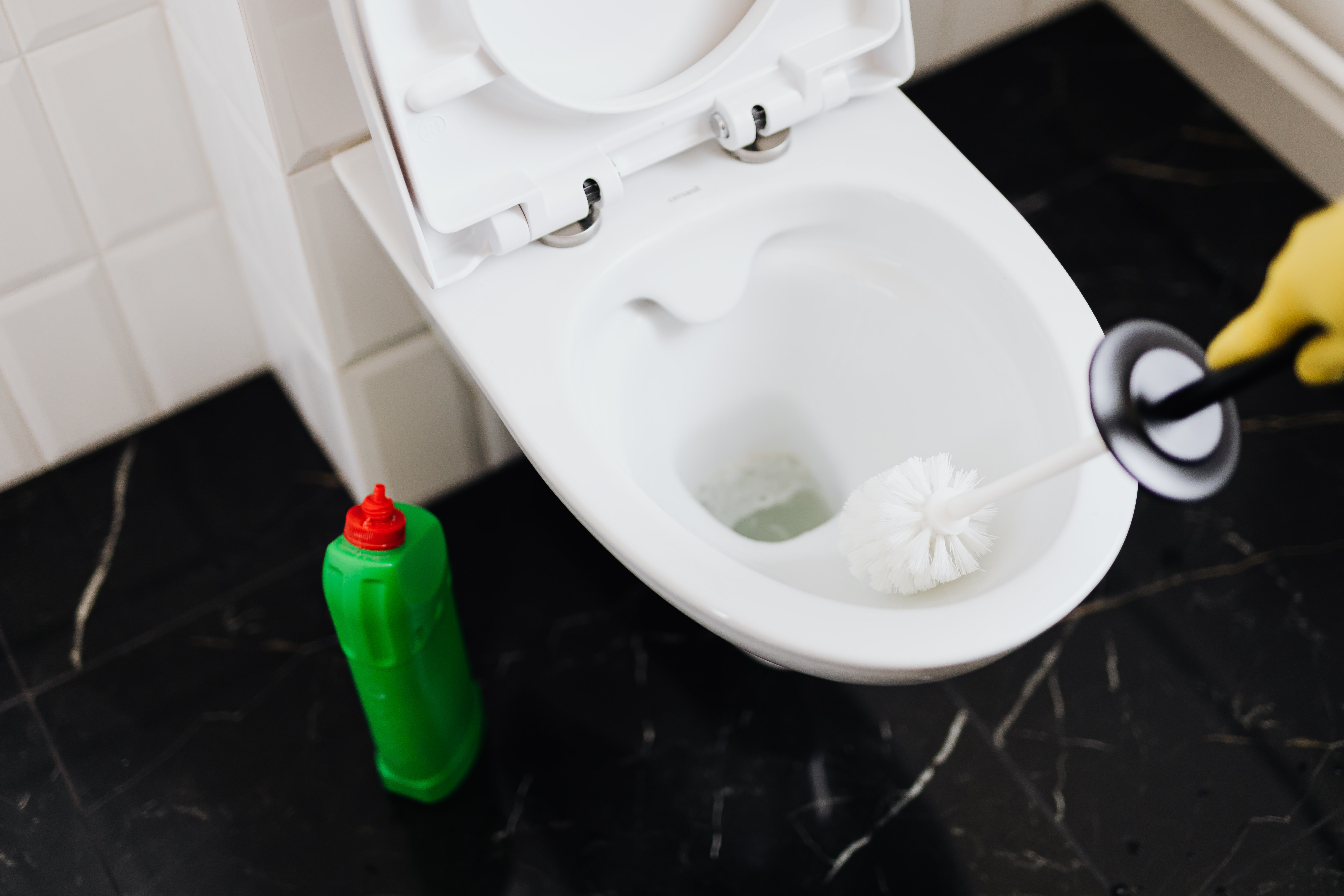 You will see there is a lot of the same dangerous ingredients in cleaning products as I mentioned in my blog on toxic skin care products (in my blog I share some studies related to parabens, triclosan, and phthalates).
You will see there is a lot of the same dangerous ingredients in cleaning products as I mentioned in my blog on toxic skin care products (in my blog I share some studies related to parabens, triclosan, and phthalates).
DANGEROUS TOXINS & WHAT THEY ARE IN:
- PARABENS, FRAGRENCES, TRICLOSAN (used in hand soaps & dishwashing detergents)
- PHTHALATES (anything with fragrance – found in air fresheners & dish soap),
- SODIUM LAURETH SULFATE (SLES) (often found in hand soaps)
- SODIUM LAURYL SULFATE (SLS) (found in hand soaps)
- METHYLISOTHIAZOLINONE & METHYLCHLOROISOTHIAZOLINONE (found in hand soaps)
- COCAMIDOPROPYL BETAINE (found in hand soaps)
- 2-BUTOXYETHANOL (window & multi-purpose cleaners)
- PERCHLORETHYLENE (spot-removers & carpet cleaners)
- QUATS (fabric softener liquids & anything labeled antibacterial)
- AMMONIA (glass cleaner & polishing products)
- SODIUM HYDROXIDE (oven cleaners & drain openers)
Other Chemicals: 1,4-dioxane, Formaldehyde (and Quaternium-15), Butyl Cellosolve, Petroleum Distillates, Phenols, Propylene Glycol, Sulfuric Acid, and Trichloroethane.
This still isn’t a complete list but it gives you an idea of how many toxic chemicals there are in our cleaning products.
PRODUCTS TO BE CONCERNED ABOUT: Disinfectant wipes, all air fresheners (plug-ins too), Mop cleaners, bleach (of course), window cleaners, toilet bowl cleaners, countertop sprays, dish soaps, hand soaps, laundry detergent, dryer sheets, carpet cleaners, etc.
What Does the Government do to Regulate Cleaning Products?
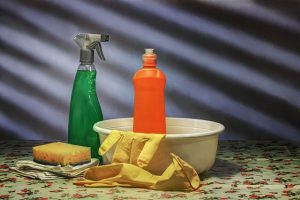 They are regulated by the U.S. Environmental Protection Agency which requires that companies list ingredients are are active disinfectants or potentially harmful. It is not required that all ingredients are listed. “The government only requires companies to list ‘chemicals of known concern’ on their labels (SCIENTIFIC AMERICAN, 2022). That doesn’t mean these other ingredients are not harmful. We are trusting the companies to decide what ingredients they disclose as being harmful. The government doesn’t test whether these chemicals are safe, and manufacturers are not required to test them either.
They are regulated by the U.S. Environmental Protection Agency which requires that companies list ingredients are are active disinfectants or potentially harmful. It is not required that all ingredients are listed. “The government only requires companies to list ‘chemicals of known concern’ on their labels (SCIENTIFIC AMERICAN, 2022). That doesn’t mean these other ingredients are not harmful. We are trusting the companies to decide what ingredients they disclose as being harmful. The government doesn’t test whether these chemicals are safe, and manufacturers are not required to test them either.
Of course most products do have warning labels sharing hazards associated with their ingredients. But with so many hazards why are we bothering?? Even if you wear a hazmat suit every time you clean your house there are still lingering toxins. They pose risks to our health and our environment. View more on this topic on Scientific American here: Corporate Whitewash?: Why Do Cleaning Product-Makers Keep Most of Their Ingredients Secret?.
The alternatives to these chemical cleaners are simple, not overly expensive, smell better, are more natural, and they are completely worth it! Did you know you can easily make your own cleaners? Vinegar is one of those things you can use to clean almost anything. I will talk more about the use of vinegar and other non-toxic solutions in my next blog.
Indoor Air Pollution Causes Beyond Chemical Cleaners
There are actually a lot of things that can pollute your air causing health problems over time, if not immediate. Besides your chemical cleaners and air fresheners which are toxic, I will review some other indoor toxins to be aware of.
Popular Indoor Air Pollutants include chemical cleaners, air fresheners, cigarette smoke, candles, mold, radon, building materials/furnishings, and products from hobbies that can create toxic fumes in the air.
Problems with Candle Ingredients
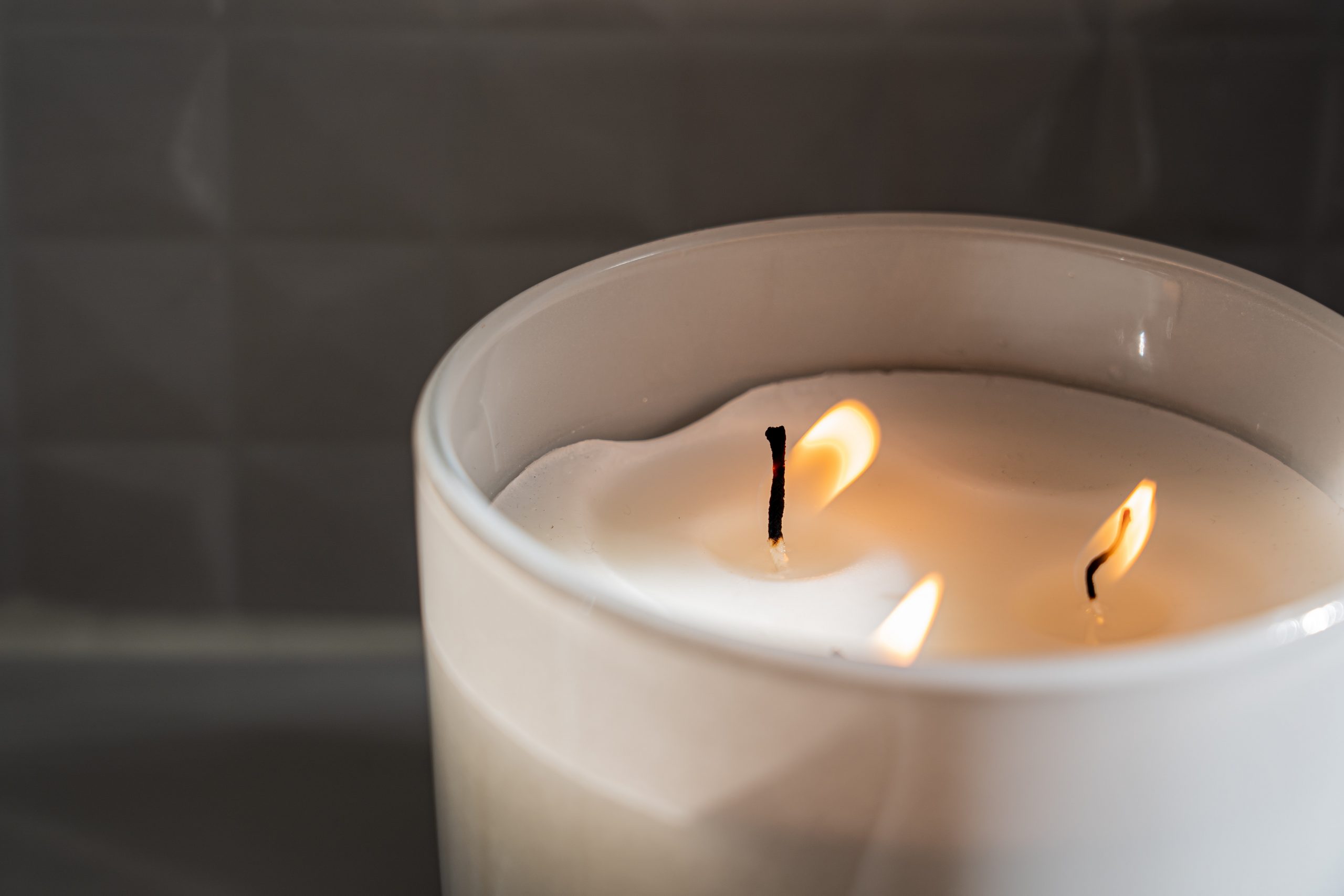
Paraffin candle wax is a by-product of petroleum.
Candles containing fragrances are problematic, along with them being made from paraffin. Paraffin candle wax is a by-product of petroleum. When paraffin candles burn, they emit black soot and toxic fumes—similar in chemistry to diesel exhaust—containing poisonous chemicals such as benzene, toluene, naphthalene, tri-decane, tetra-decane, penta-decane, and hexadecane (Good Light, 2020). These things are associated with asthma and other respiratory illnesses.
Most candles seem to be made of soy in recent years, but sadly that isn’t the best solution. Soy is not a natural wax, it is made from hydrogenated oil. Also, if you have read my blog on GMOs you know that most soy is genetically modified. Which means there can be a lot of pesticides and other chemicals in soy. Make sure you check the ingredients before purchasing a candle.
Mold – A Serious Problem
Mold is a serious problem in a home! Some people are more susceptible to it than others. My closest friend who lives in Florida had mold issues in her apartment and her health progressively got worse the longer she lived there. She had some chronic health issues after that and her dog has been on a special diet ever since. In my first apartment the neighbors below actually had a mold problem. My husband was outside with the neighbor listening to him talk about the health issues his family was having (which involved hospital visits). For some reason my husband went into their place for just a few minutes. He felt sick for nearly a week after (coughing, sneezing, low energy, etc). We had moved not long after that so we were lucky to not encounter those same problems.
Indoor Air Testing
If you have constant allergies that don’t just change with the weather, mold should be considered! You should also be cautious about mold if you live in Florida or some other place with that same humidity. Indoor humidity levels should be below 50% to prevent mold. A dehumidifier and air conditioning can help with that. Here is an article that gives some options for mold testing: The Best At-Home Mold Tests to Use Around Your Home.
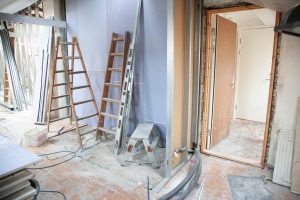 Housing Material Hazards
Housing Material Hazards
Whether you are remodeling, building, or doing a minor construction project, you should be very careful about what you are putting in your home and what you might be breathing in during the process.
Asbestos, a known carcinogen linked to respiratory and lung problems is used in heat insulation. Therefore, their most common uses include floor and ceiling tiles, plasters, insulations, adhesives, wallboard, roofing materials, fireproofing materials, and cement products (National Center for Healthy Housing). As I’ve mentioned previously, formaldehyde is a known carcinogen responsible for respiratory problems. It can be found in pressed wood products that use adhesives, drapery, glues, and even paints and coating products.
Phthalates, as mentioned previously, are used to make plastics like PVC. Major uses of flexible PVC in buildings include carpet backing, resilient flooring, wall coverings, acoustical ceiling surfaces, upholstery textiles, roof membranes, waterproofing membranes, and electrical cord insulation (National Center for Healthy Housing). Phthalates have been linked to hormone problems and reproductive issues. Other toxins include PBDEs often found in insulation, SCCPs found in mental building products, and CCA often used in treating wood, and more.
Additionally, if you have an old home make sure that you are not exposing yourself to old paint that has lead in it. Lead is a toxin that is very hard to get rid of and can cause all sorts of problems. I had heavy levels of lead in my body, and it took a very intense detox for me to get my lead levels down. I was told the lead was mostly from birth because lead can be passed down for multiple generations.
Dangers of Radon
Radon is a natural, invisible radioactive gas that is formed from the natural decay of uranium that is in most soil. It can get into cracks and holes in your home’s foundation and get trapped in your basement. Our home was susceptible to radon. We actually had a test done for radon and ended up having a radon unit installed in our basement to protect us. Radon is known to cause lung cancer.
Video: Toxic Household Products That Are Destroying Your Health
Some Personal Experiences & Thoughts on This
At 29 years old, I had only been cleaning on a weekly basis with chemical cleaners for around 11 years mostly using gloves, yet my naturopathic doctor found heavy amounts of chlorine in my body.
I recall my husband used to always struggle with the smell of my cleaner cloth I would use on my Swifter Sweeper. Years ago, I remember thinking… well it’s necessary, easy, and what’s the harm other than an irritating smell? I now can’t stand the smell of chemical cleaners and it makes me uneasy to be in a room consumed with the smell of these cleaners. Some things are unavoidable such as using hand soap in public restrooms. But I won’t go anywhere near disinfectant hand wipes, dryer sheets, bleach, etc.
Are all these cleaners the reason my dog got lung cancer? Yes, I’m pretty sure that’s what happened.
It makes me mad to think back on all the dangerous toxins I was releasing into my air. But at the time, no one even hinted to me that these products were dangerous. So I figure… how many people have never had anyone even hint to them that all these cleaning products are VERY hazardous to their health? Hopefully this blog is a bit more than a hint though.
Indoor Air Pollution Control – Time to Take Action!
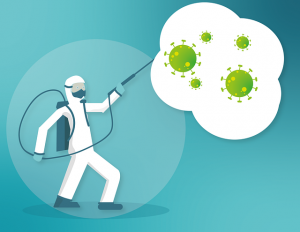 Chemical cleaners can last months before you need to replace them, they are not crazy expensive, and they are wreaking long-term havoc that isn’t worth the costs. The price you paid for them initially is a sunk cost. So after learning all about the dangers of these cleaners, I went ahead and collected all of them throughout my house and trashed them.
Chemical cleaners can last months before you need to replace them, they are not crazy expensive, and they are wreaking long-term havoc that isn’t worth the costs. The price you paid for them initially is a sunk cost. So after learning all about the dangers of these cleaners, I went ahead and collected all of them throughout my house and trashed them.
Sadly, our exposure to all these chemical toxins has increased with the 2020 virus. People think they are protecting themselves, but they are actually causing even more problems for themselves in the future. This was talked about in my Flaws in Healthcare section of my blog Facts on Germs & Immune Health to Uncover the LIES.
Find out how to have cleaner air in your home and find natural clean replacements for your cleaners in my next blog.
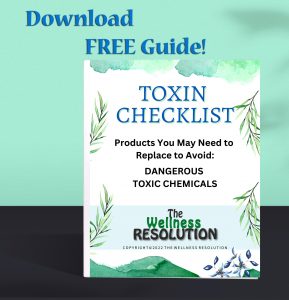
Download this Free Guide:
TOXIN CHECKLIST
(Products to Replace)
View All Blogs on Toxins
What are Toxins in the Body? (Overview of All Things Toxic)
DANGER! Toxic Ingredients in Skin Care Products
How to Replace Dangerous Skin Care Products
Air Quality Solutions and Replacing Chemical Cleaners
Toxic Products in Your Kitchen & Choosing Safe Cooking Utensils
Outdoor Toxins – What’s in your yard?
Methods to Detox Toxins Including Detoxing Naturally
References
Sholl, Jessie. (2020, October 1). Experience Life BY LIFE TIME/8 Hidden Toxins: What’s Lurking in Your Cleaning Products? Retrieved from: https://experiencelife.lifetime.life/article/8-hidden-toxins-whats-lurking-in-your-cleaning-products/
Puisis, Erica. (2022, April 7). the spruce/The Best At-Home Mold Tests to Use Around Your Home. Retrieved from: https://www.thespruce.com/best-at-home-mold-tests-5080272
Good Light/Why Paraffin Was is Bad for You. (2020, September 14). Retrieved from: https://goodlightcandles.com/blogs/news/why-paraffin-wax-is-bad-for-you
SCIENTIFIC AMERICAN/Corporate Whitewash?: Why Do Cleaning Product-Makers Keep Most of Their Ingredients Secret?. (2011, April 13). Retrieved from: https://www.scientificamerican.com/article/toxic-ingredients-cleaning-products/#:~:text=Since%20cleaning%20products%20aren’t,active%20disinfectants%20or%20potentially%20harmful.
Price, Annie. (2016, Nov. 17). Dr. Axe/Dangers of Synthetic Scents Include Cancer, Asthma and Kidney Damage. Retrieved from: https://draxe.com/health/dangers-synthetic-scents/
Steinemann, Anne. NIH/Fragranced consumer products: exposures and effects from emissions.
Retrieved from: https://www.ncbi.nlm.nih.gov/pmc/articles/PMC5093181/
J., Meghan. Force of Nature/How to Choose Toxic Chemical Free Hand Soap. Retrieved from: https://www.forceofnatureclean.com/choosing-chemical-free-hand-soap/
CDC/2019 AR Threats Report. Retrieved from: https://www.cdc.gov/drugresistance/biggest-threats.html#:~:text=According%20to%20the%20report%2C%20more,people%20die%20as%20a%20result
Forti, Melanie. AFOP: Healthy & Safety Programs/Why You Should Stop Using Bleach NOW. (2016, Nov. 17). Retrieved from: https://afophs.wordpress.com/2016/11/17/why-you-should-stop-using-bleach-now/#:~:text=Bleach%20is%20very%20irritating%20and,esophageal%20perforation%2C%20nausea%20and%20vomiting.
More References
Nelson, David. (2018, Feb. 20). WHSV/Home cleaning products may be as harmful as 20 cigarettes a day.
Retrieved from: https://www.whsv.com/content/news/Home-cleaning-products-may-be-as-harmful-as-20-cigarettes-a-day-474587133.html
Detrick, Hallie. (2018, Feb. 19). Fortune/Using Household Cleaning Products Can Be as Bad as Smoking a Pack a Day. Retrieved from:
https://fortune.com/2018/02/19/cleaning-products-cigarettes-lung-health/
EPA/The Inside Story: A Guide to Indoor Air Quality. Retrieved from: https://www.epa.gov/indoor-air-quality-iaq/inside-story-guide-indoor-air-quality#:~:text=In%20the%20last%20several%20years,percent%20of%20their%20time%20indoors.
Swanke, Sarah. (2013, May 28). EWG/Is Lysol’s New Crusade Against Germs “Healthing” or Hurting?. Retrieved from: https://www.ewg.org/news-insights/news/lysols-new-crusade-against-germs-healthing-or-hurting
National Center for Healthy Housing/Potential Chemicals Found in Building Materials. Retrieved from: https://nchh.org/information-and-evidence/learn-about-healthy-housing/building-products-materials-and-standards/chemicals/
I have a Wellness Coach Certificate, I'm an entrepreneur, an innovator, writer, and artist. My expertise includes over 7 years of marketing, research, and developing content for holistic health businesses. Plus, my own personal journey of becoming chronically sick: understanding what went wrong, and finding a way to heal and live a healthier life. I have a passion for wellness with a wealth of knowledge surrounding: wellness, flaws in healthcare, root causes for chronic illnesses, and alternative treatments.

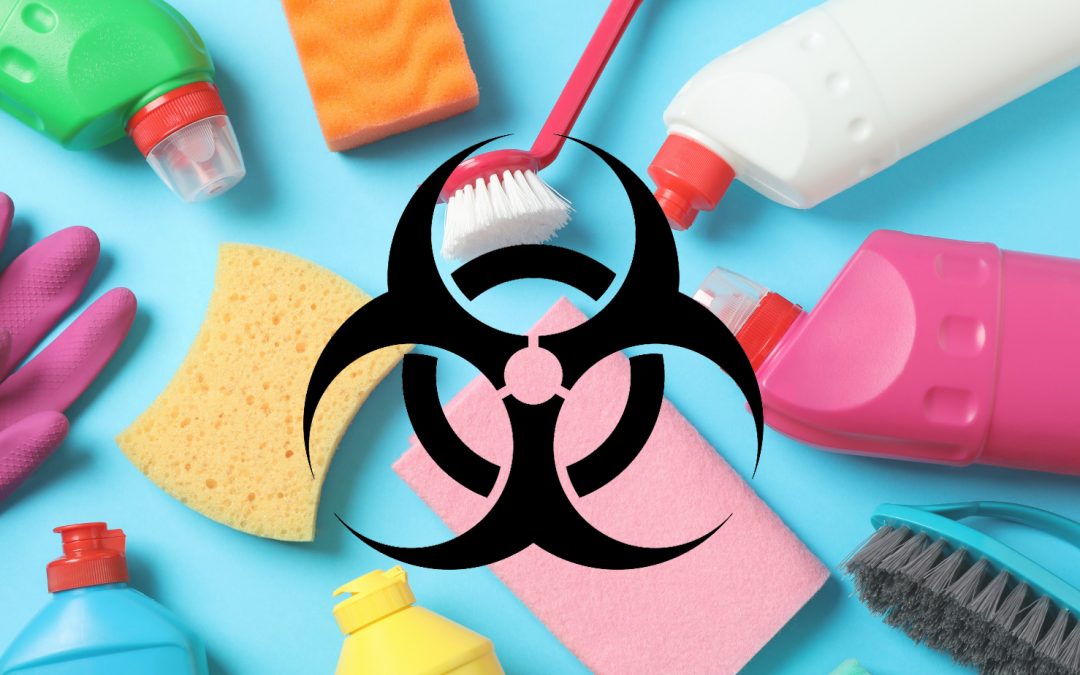

Wow this is a very interesting read. I did not think about indoor air pollution having a negative impact on our health and how so many household products could be the cause. Really made me reflect about the products I buy and use regularly. Thank you for sharing!
I never realized it either until I started having health issues. I wish someone would have told me sooner.